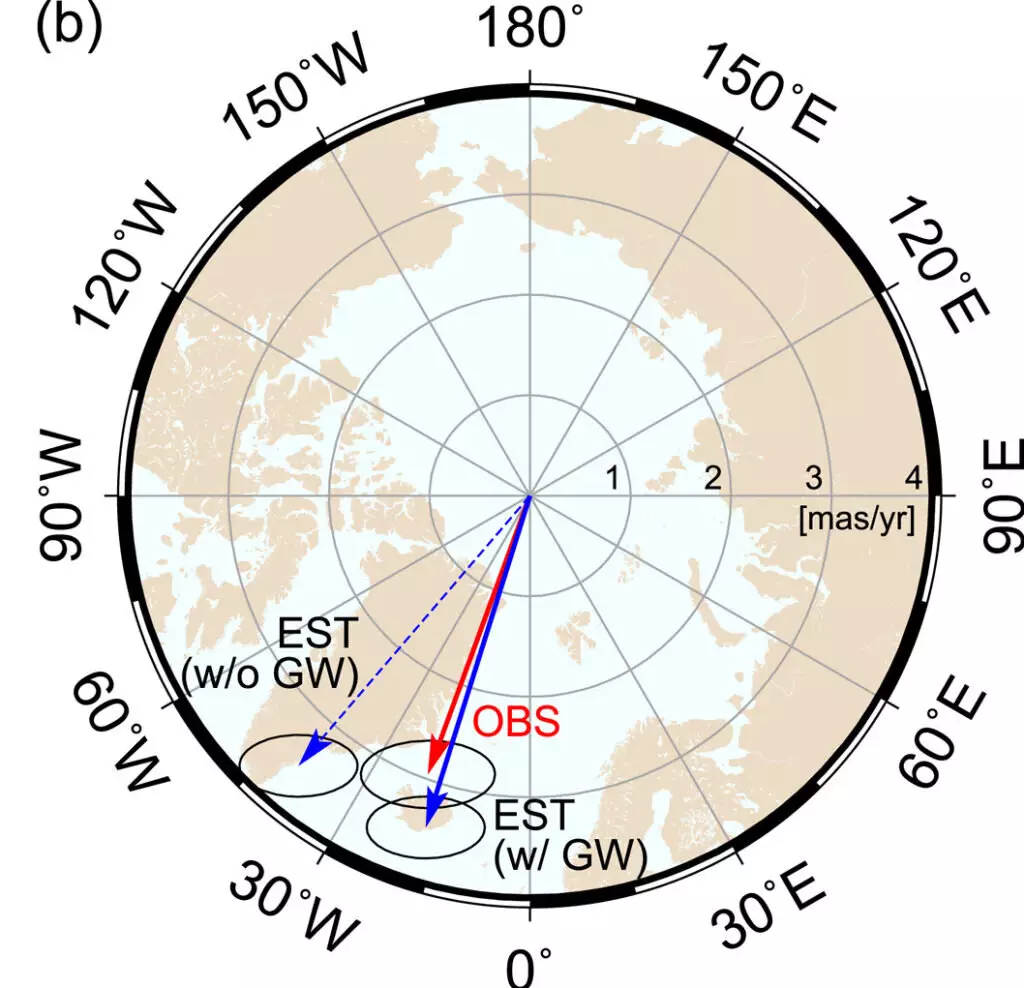Groundwater pumping has caused the Earth’s axis to shift and has contributed to sea-level rise, according to a new study published in Geophysical Research Letters. Using climate models, researchers estimated that humans pumped 2,150 gigatons of groundwater between 1993 and 2010, the equivalent of over 6mm of sea-level rise. The Earth’s rotational pole moves during a process called polar motion, which is the point around which the planet rotates. The distribution of water affects how mass is distributed, shifting the Earth’s rotation.
Groundwater’s impact on the Earth’s rotation
Groundwater pumping has shifted the Earth’s axis by nearly 80cm in the east between 1993 and 2010. The redistribution of groundwater has had the largest impact on the drift of the rotational pole, according to Ki-Weon Seo, a geophysicist at Seoul National University who led the study. The model only matched the observed polar drift once the researchers included 2150 gigatons of groundwater redistribution. Without it, the model was off by 78.5cm, or 4.3cm of drift per year.
The location of the groundwater matters for how much it could change polar drift; redistributing water from the mid-latitudes has a larger impact on the rotational pole. During the study period, the most water was redistributed in western North America and northwestern India, both at mid-latitudes. Countries’ attempts to slow groundwater depletion rates, especially in those sensitive regions, could theoretically alter the change in drift, but only if such conservation approaches are sustained for decades, Seo said.
Surendra Adhikari, a research scientist at the Jet Propulsion Laboratory, said: “They’ve quantified the role of groundwater pumping on polar motion, and it’s pretty significant.” On geologic time scales, polar drift can have an impact on climate, Adhikari said.
Pumping water out of the ground and relocating it has shifted the Earth’s axis, according to a new study. The redistribution of groundwater has had the largest impact on the drift of the Earth’s rotational pole and has contributed to sea-level rise. The location of the groundwater matters for how much it could change polar drift, with the most water being redistributed in western North America and northwestern India, both at mid-latitudes. Countries’ attempts to slow groundwater depletion rates, especially in those sensitive regions, could theoretically alter the change in drift, but only if such conservation approaches are sustained for decades.



Leave a Reply